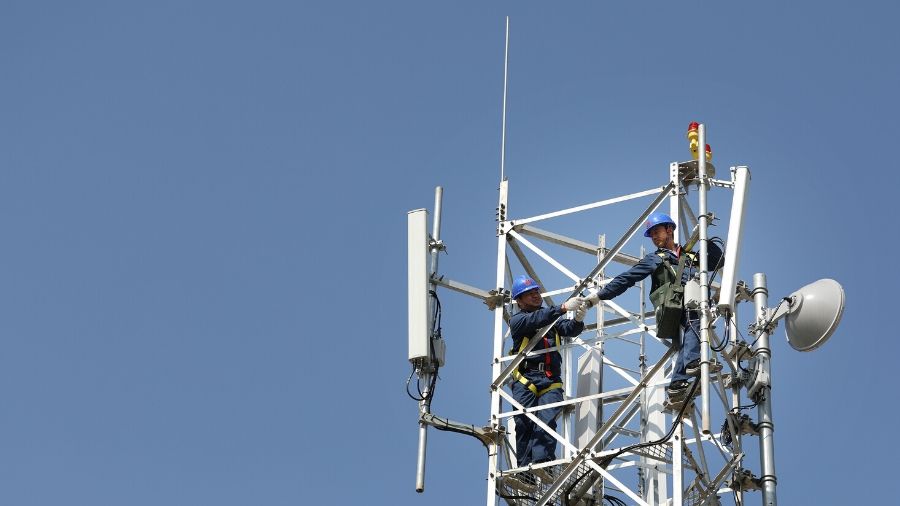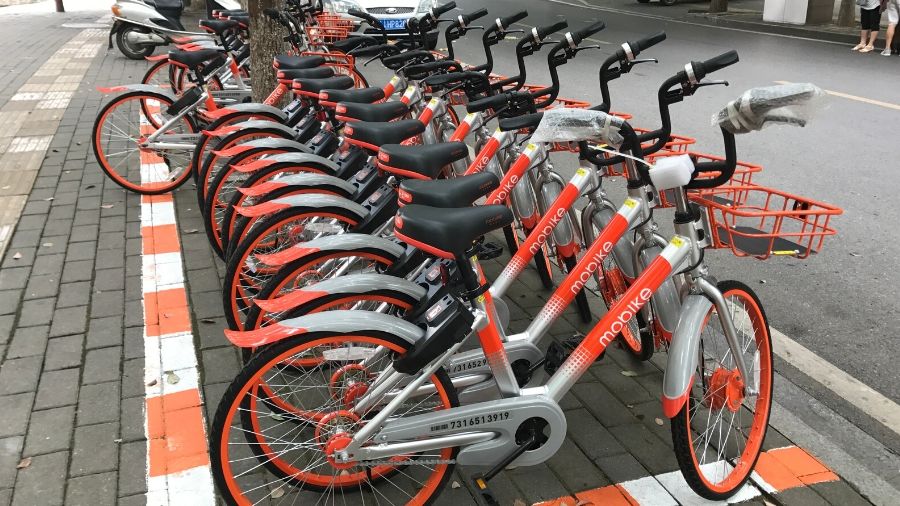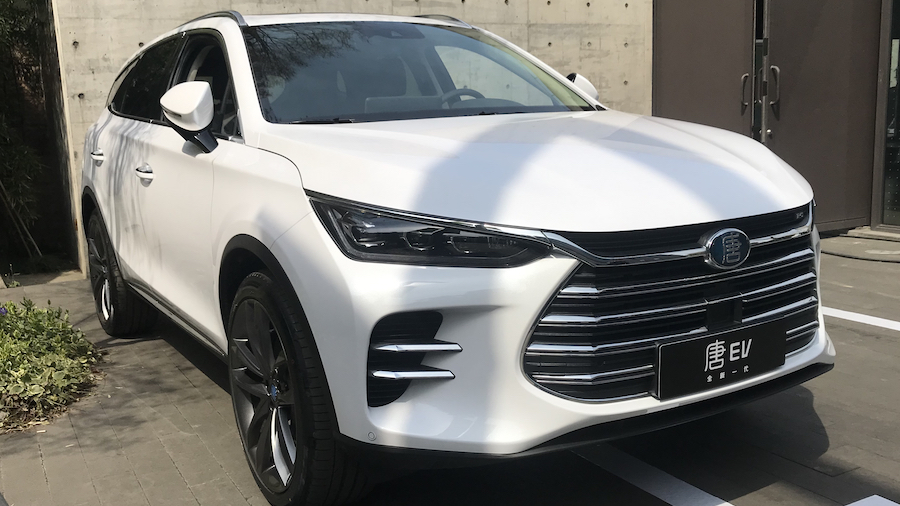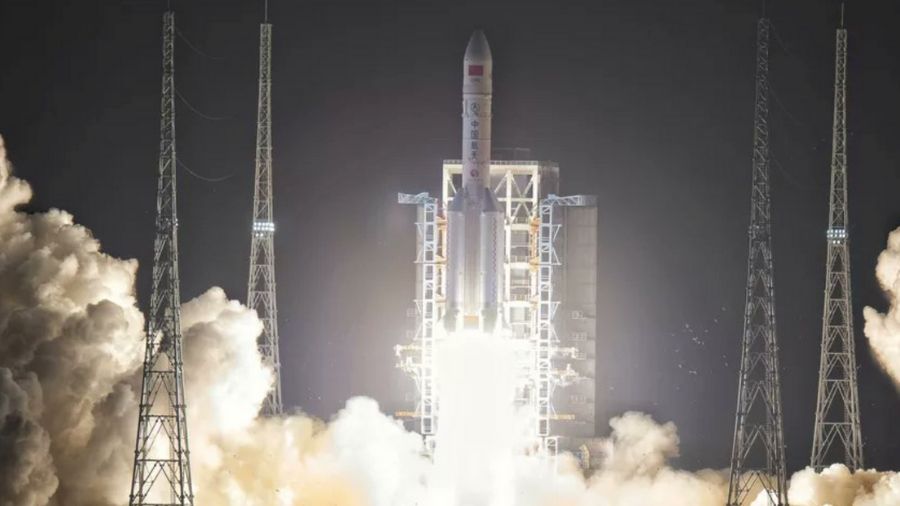6 ways that Chinese tech is ahead of the rest of the world
From WeChat and 5G to megaprojects and Mars missions

Your smartphone comes from China, a country where ‘phone commerce’ via a messaging app is commonplace. It’s the home of Huawei, Alibaba, Baidu, Tencent and Xaomi, and it’s home to massive investments in AI, 5G, self-driving cars, robotics, electric vehicles and even missions to Mars. Here are just a few ways that an increasingly high-tech China is creeping ahead of the rest of the world.

1. A 'super-app'
China has a population of 1.4 billion people. About 1.1 billion of those use WeChat. Take that in for a moment. Globally, Facebook has 2.4 billion users. WhatsApp has 300 million. In China, WeChat (called Wēixìn in Mandarin, which translates as 'micro-message’) – essentially a messaging service owned by tech giant (and the world’s fifth-largest company) Tencent – is how people interact with … everything and everyone.
As well as social media, WeChat works as a mobile payment app, with all retailers – including buses and metros in China – scanning a QR code on the app to make the transactions. It can be used to book flights and hotels just as easily as buying food from a supermarket or even a street vendor. WeChat balance is now the primary way to pay and receive money in China. Who needs banks?
It does have a rival – Alibaba’s Alipay – but with a 79% market penetration in China, WeChat has been called China’s ‘digital life force’, but it’s push to become popular globally has nevertheless failed. It seems destined to be only the fifth-most used app in the world, after Facebook, YouTube, WhatsApp and Facebook Messenger … but it’s way ahead of all of them in what is can do.

China moves fast. We’ve all heard the tales of how fast its construction companies work, notably the building in 2015 of a 57-storey skyscraper in 19 working days. But it’s China’s other mega-tech projects that stand out. Take its bullet trains. Japan is still thought of by many as the home of the bullet train with its famous Shinkansen, but over the last 15 years China Railway High-speed (CRH) has constructed a much more extensive network, and makes its own Fuxing-class bullet trains.
Now the world’s longest high speed railway network, China’s bullet trains travel between 155–217 mph. Land at Shanghai’s Pudong Airport and you can even sample the future of ultra-high-speed trail on the Shanghai Maglev, a magnetic levitation train that reaches a top speed of 267 mph.
China has plenty of other mega-tech projects. There’s the Three Gorges Dam, a hydroelectric gravity dam that spans the Yangtze River and it fuels the world's largest power station. Also the Aizhai Suspension Bridge, the world's highest and longest suspension bridge, and the 16-mile Hong Kong-Zhuhai-Macao Bridge that hits makes land at two artificial islands on its way. And don’t forget the Shanghai Tower, the world's second-tallest building at 2,073 ft., and the Aperture Spherical radio Telescope (FAST), the largest single-dish radio telescope for astronomy in the world.
Sign up for breaking news, reviews, opinion, top tech deals, and more.
What’s more, China’s ‘Belt and Road’ initiative is seeing it invest US$6 trillion in big construction projects – such as highways, ports and airports – in its neighboring countries.

3. 5G networks and AI
How is 5G working out for you so far? After a flurry of advertising in 2019 around various network launches, the fuss has died down. Why? 5G doesn’t really exist in the UK and the US outside of city centres, that’s why. Cue China Mobile, China Unicom and China Telecom, which have brought forward their plans to offer high-speed connectivity.
Not surprisingly, China is getting one of the world's largest 5G deployments. 5G is already available to in 50 cities in China, and 130,000 5G base stations are about to go live. What’s more, China is also home to two thirds of global investment into artificial intelligence (AI), recently replacing the US. When it comes to cutting-edge technology, it’s all about China.

4. Dockless bike-sharing
Thousands of cities around the world now have bike-sharing schemes. You get the app, sign-up, pick-up a bike from a rack, use it, and return it. Easy. So why is China going down a more high-tech route?
The latest craze is for dockless bike hire, which removes the need for physical central hub and instead uses virtual mapping, Bluetooth and GPS-driven geofencing to keep track of where they are. Mobike in Shanghai – which has about 1.5 million dockless bikes – has an app that tells riders where they can and cannot park their bikes when they’re done with them. If they leave them in random places, an alarm goes off on the bike, and they receive a text message warning. The spread of 5G is only going to help schemes like this.

5. Electric vehicles
No one is saying China is an eco-friendly country. It’s got a bad reputation for pollution and it uses half of the world’s concrete. However, it’s already the largest market for battery-powered cars in the world, being both the largest manufacturer and buyer of electric vehicles.
It makes almost all of the world's electric buses. In short, the electric vehicle revolution is already underway, and China is owning it. Your first electric car? It will probably be from China.

6. Ambitious space program
China now launches more rockets each year than any other nation, and although western media is routinely dismissive of it, the Chinese National Space Administration (CNSA) – China’s NASA – is definitely going places.
It doesn’t have the budget of NASA, but in 2019 it landed a spacecraft and lunar rover on the far side of the moon, with stunning scientific return. Not even NASA can do that. If all goes to plan in 2020, the CNSA will launch its Chang’e-5 mission to scoop-up some moon rock and launch it back to Earth. Then it will launch an all-new space station. Finally, it will send its Huoxing mission to Mars.
What’s more, that’s all being done with massive space rockets designed and built solely in China. Further proof, if any was needed, that when it comes to technology, China is creeping ahead of much of the world.

Jamie is a freelance tech, travel and space journalist based in the UK. He’s been writing regularly for Techradar since it was launched in 2008 and also writes regularly for Forbes, The Telegraph, the South China Morning Post, Sky & Telescope and the Sky At Night magazine as well as other Future titles T3, Digital Camera World, All About Space and Space.com. He also edits two of his own websites, TravGear.com and WhenIsTheNextEclipse.com that reflect his obsession with travel gear and solar eclipse travel. He is the author of A Stargazing Program For Beginners (Springer, 2015),